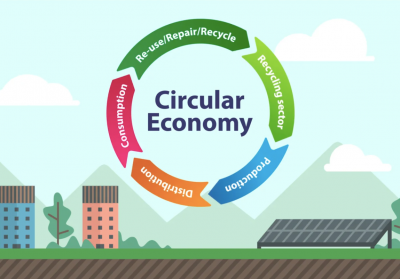
The recently-concluded UN Environment Assembly in Nairobi highlighted the need to promote sustainable production, consumption and management of plastic, through “circular economy approaches”. When India signed the Plastic Pact last year, it aimed to promote a circular economy for plastic. What exactly is circular economy?
Linear economy businesses take a natural resource and turn it into a product which ultimately becomes waste. It follows a take-make-dispose approach of production. The resulting waste including plastics, textiles, food, electronics and more – is taking its toll on the environment and human health.
Whereas a circular economy employs reuse, repair and recycle policy to create a closed-loop system. In a circular economy, all types of waste, such as scrap metal, clothes, and expired electrical appliances are returned to the economy. The result is minimal use of resources, and minimal waste, pollution and carbon emissions. To achieve a circular economy, the work should start from the way we produce our products. It entails redesigning products to be more durable, reusable, repairable, and recyclable, and therefore kept in circulation for as long as possible. Beyond product design innovations, it also means changing the way we consume and use goods and services, and rethinking consumerism as a society.
A circular economy offers a wide range of social, economic, and environmental benefits. However, only 8.6% of the world is circular right now and a switch from linear economy cannot happen overnight. It requires the collaboration of everyone in a product’s cycle. The transition requires new models of business and trade. Technology does not provide all the solutions, altering consumer behaviour and cultural change are also vital. Governments, policy makers, businesses, innovators, consumers, and recyclers should come together to accelerate the circular economy transition to realise a sustainable future.
Picture Credit : Google




